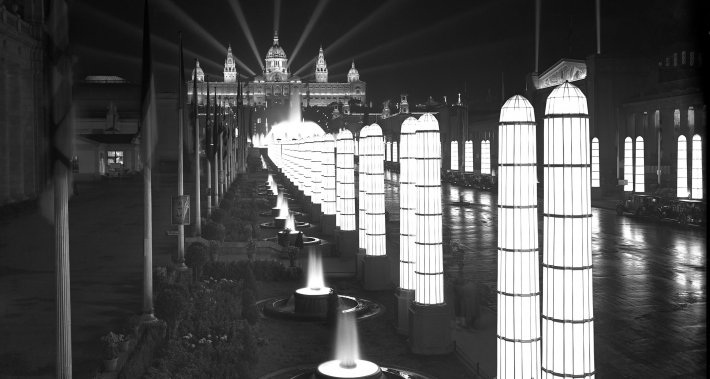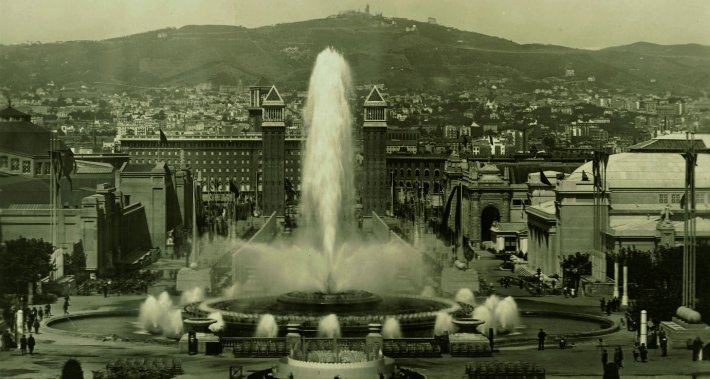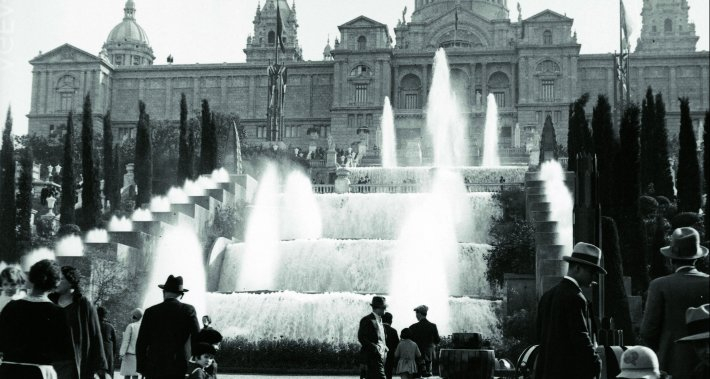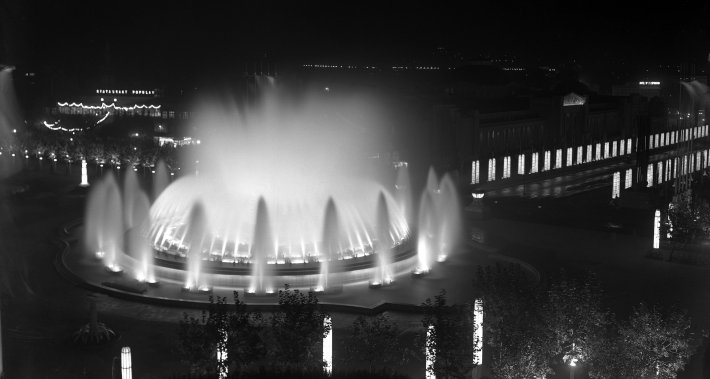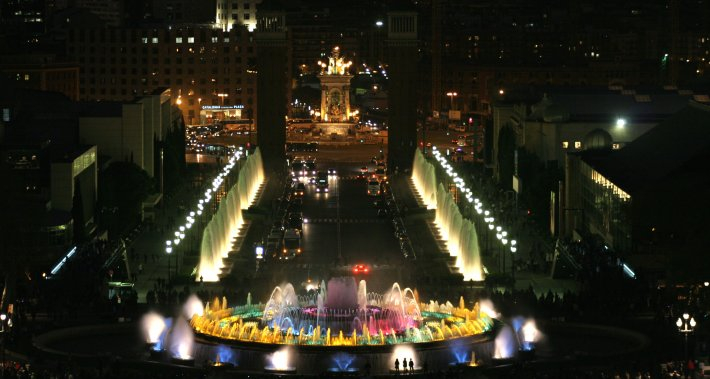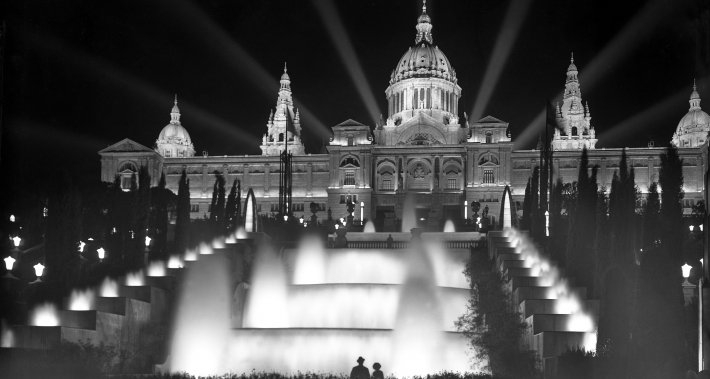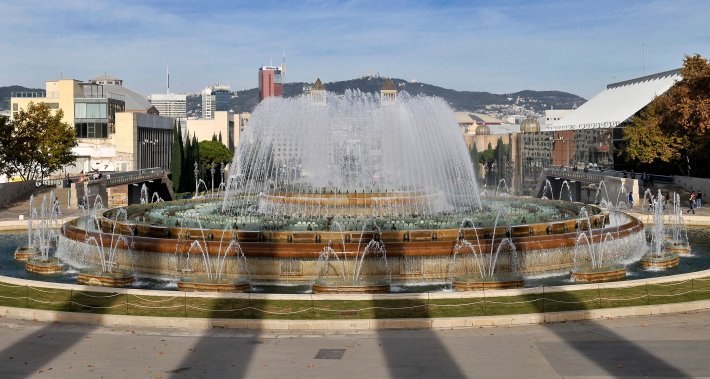History
The Magic Fountain was built by Carles Buigas for the International Expo in 1929, on the site where Josep Puig i Cadafalch's Four Columns had stood before being demolished in 1928. They were later rebuilt in 2010, only a few metres from their original location.
When work on the 1929 International Expo was already well under way, the organisers decided it needed "something special" to set it apart. That was when Carles Buigas presented his plans for a "colossal, daring and costly plan", which would later become Montjuïc's Magic Fountain.
In under a year, over 3,000 workers made Buigas' dream come true, bringing light, water and colour to the broad avenue that was to be the Expo's main thoroughfare.
Timeline
- 1929: Creation of the Magic Fountain.
- 1954-55: Buïgas undertook the first restoration work on the fountain, in order to rebuild features that had been damaged or lost during the Spanish Civil War and the post-war period. The hydraulic valve mechanism was also replaced by an electro-pneumatic one.
- The 1960s: the renovation of some control mechanisms, replacement of part of the lighting with electronic regulators and of the remote-control system with a new electronic automatic analogue control system using a magnetic tape, and the incorporation of sound.
- In 1972 and 1975, fountains 4 and 3, respectively, stop working.
- Barcelona '92 Olympic Games: The complete renovation of the four fountains and the provisional renovation of the Magic Fountain, for its use during the Olympic period.
- 1993: The Magic Fountain project was halted and replaced by a laser-beam show projected onto the Palau Nacional and a water screen.
- 1994: A project for the general repair of the fountain was presented.
- 1996-1998: The repair work was carried out in two phases. The first phase between October 1996 and June 1997, and the second phase between October 1997 and June 1998.
- 23 June 1998: The renovated Magic Fountain is officially opened.
- 2010: The Magic Fountain starts using groundwater, as part of Barcelona's commitment to sustainability. This commitment has resulted in a number of measures aimed at reducing water consumption, something that has been especially significant in municipal facilities and services, including the use of groundwater in ornamental fountains.
- September 2011: The Magic Fountain uses a 3D choreography generator, editor and simulator for the first time, allowing the creation of new light, water and music shows in just three minutes. It also means that the shows can be previewed without starting the fountain up, which means big financial and energy savings.
- 2014: The lighting system is replaced with RGB LED technology, allowing independent control of each LED spotlight and row of lights, providing a greater range and depth of colours. New equipment for controlling consumption was also introduced, allowing the Magic Fountain to be operated more sustainably, with considerable energy savings.
- In 2014, 2015 and 2016, fountains 4, 2 and 1, were returned to working order, respectively.
A Barcelona Icon
The Magic Fountain has been, and still is, an important part of some of the biggest events in the city's recent history, including the 1992 Olympic Games and the annual La Mercè pyrotechnic musical show, which combines the fountain's choreographies with a fireworks display. This attracts large crowds of local residents and people from all over the world to Avinguda de la Reina Maria Cristina.


